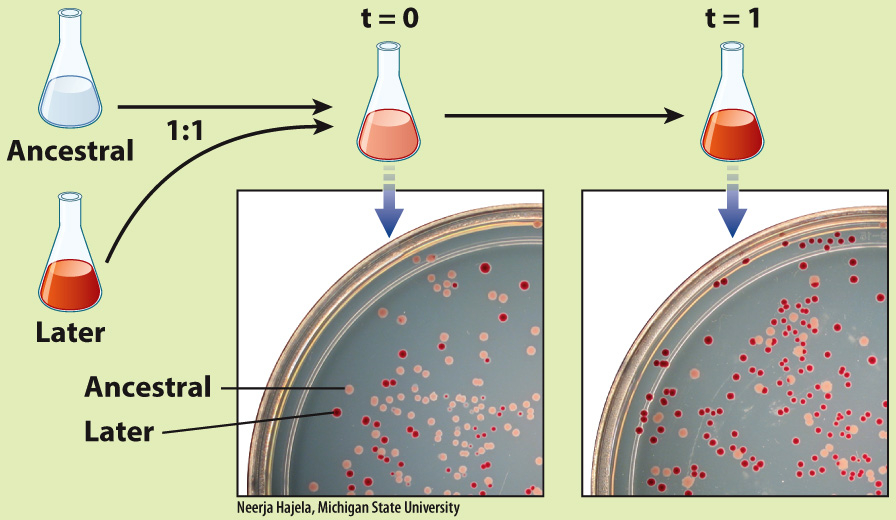HOW DO WE KNOW?
FIG. 1.18
Can evolution be demonstrated in the laboratory?
BACKGROUND Escherichia coli is an intestinal bacterium commonly used in the laboratory. It grows poorly in liquid media where the only source of food is succinate. Santiago Elena and Richard Lenski wondered whether E. coli grown for 20,000 generations in succinate would evolve in ways that improved their ability to metabolize this compound.
HYPOTHESIS Any bacterium with a random mutation that increases its ability to utilize succinate will reproduce at a faster rate than other bacteria in the population. Over time, such a mutant will increase in frequency relative to other types of bacteria, thereby demonstrating evolution in a bacterial population.
EXPERIMENT Cells of E. coli can be frozen in liquid nitrogen, which keeps them in a sort of suspended animation in which no biological processes take place, but the cells survive. At the beginning of the experiment, the researchers froze a large number of samples of the starting bacteria (“Ancestral”). As the experiment progressed, they took samples of the bacterial populations at intervals (“Later”) and grew them together with a thawed sample of the starting bacteria in succinate. They then compared the rate of growth of the ancestral bacteria with that of the bacteria taken at later time points.
RESULTS At each time interval, the cells from later time points grew more rapidly than the ancestral cells when the two populations were grown together in succinate.

Over time, the bacteria grown in succinate showed more and more improvement in growth compared to the starting bacteria.

CONCLUSION Evolution occurred in the population: The bacteria evolved an improved ability to metabolize succinate.
FOLLOW-
SOURCE (top) Elena, S. F., and R. E. Lenski. 2003. “Evolution Experiments with Microorganisms.” Nature Review Genetics 4:457–